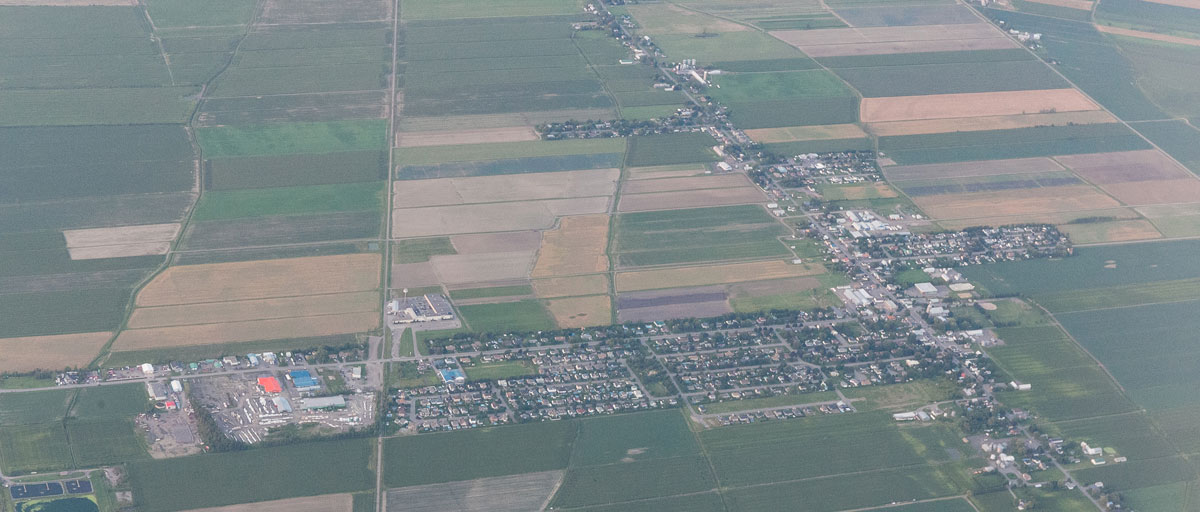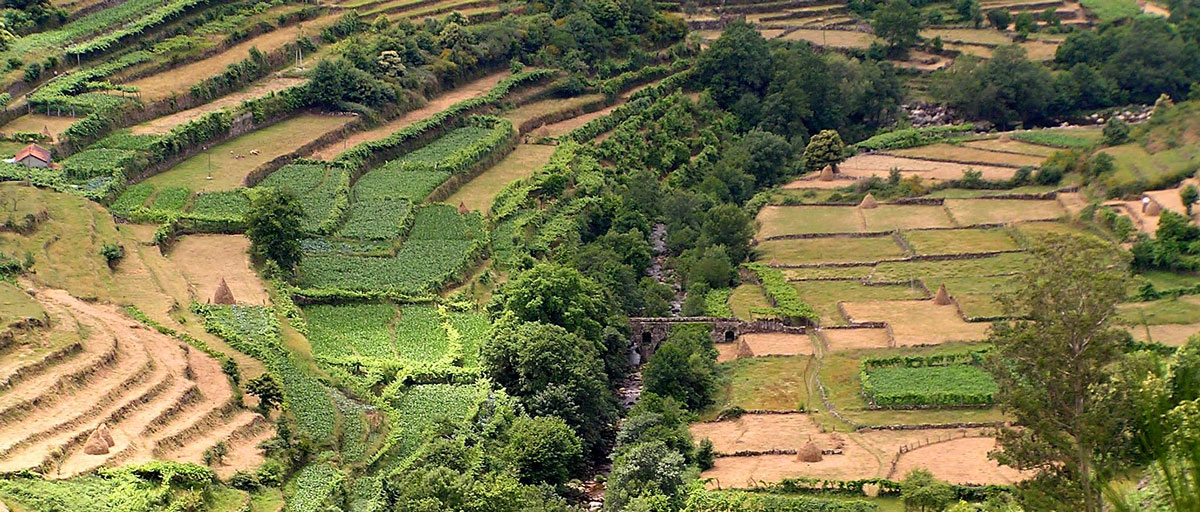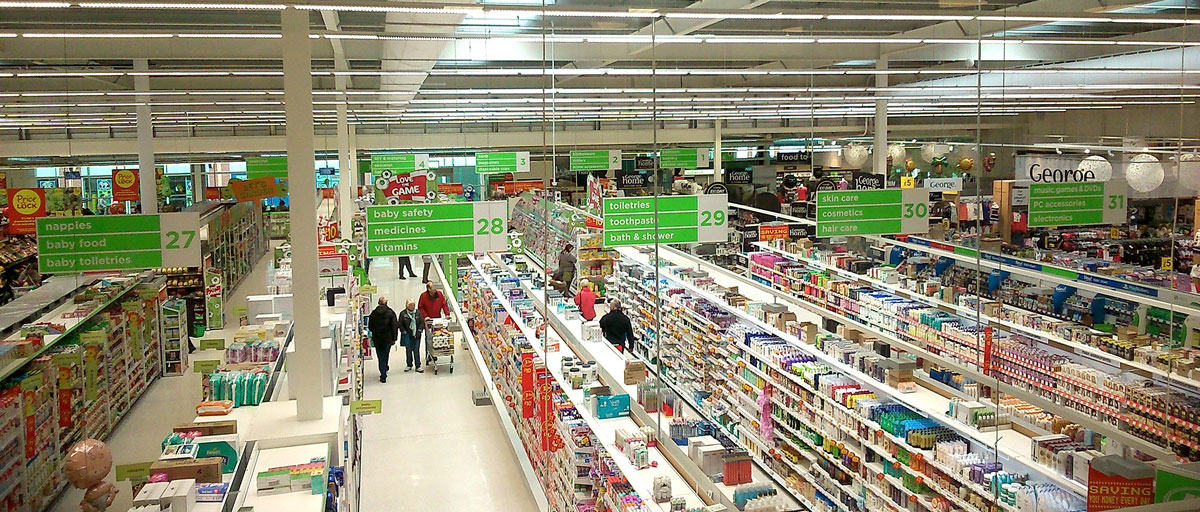Bildtext får vara max två rader text. Hela texten ska högerjusteras om den bara ska innehålla fotobyline! Photo: B. Christensen/Azote
AGRICULTURAL LANDSCAPES
Worried about food security? Keep landscapes multifunctional

Researchers studied municipalities in Southern Quebec, Canada over the course of 20 years to see whether the areas had increased or lost their biological, social, agricultural and landscape diversity. 19 of the 131 municipalities had managed to maintain or increase their multifunctionality. Photo: Wikimedia Commons
- Researchers studied 131 municipalities in Southern Quebec, Canada over the course of 20 years to see if they had increased or lost their ecosystem services
- Those places that became more multifunctional were also turning more biologically and agriculturally diverse
- The increase in agricultural and biological diversity, had no significant impact on the capacity to produce food
Why diversity is the key to resilient and sustainable farming
BRIGHT SPOTS: Who is doing better than expected and why? Bright spots are places that are doing better than expected based on extrinsic constraints for ecosystem services multifunctionality.
There is more to agriculture than just producing food. Agricultural landscapes can be bright spots when it comes to providing multiple ecosystem services and mitigating biodiversity loss and environmental degradation.
But for that to happen they need to maintain what is called a multifunctional capacity, a term used to explain how landscapes can produce food while also maintain ecosystem services such as carbon storage, water quality, soil fertility and outdoor recreation.
Or at least this is the hypothesis.
No effect on food production
In a study recently published in Global Food Security, centre researchers Cibele Queiroz and Erik Andersson together with colleagues from Canada, France and the US, studied 131 municipalities in Southern Quebec, Canada over the course of 20 years to see whether the areas have increased or lost their biological, social, agricultural and landscape diversity.
Specifically, they looked for changes in:
- Species richness and dispersion
- Agrodiversity
- Farming diversity (age, ownership)
- Landscape structure and diversity
The authors found that 19 of the 131 municipalities had managed to maintain or increase their multifunctionality, while 24 municipalities had gone the opposite direction.
Multifunctional agricultural landscapes help maintain or increase species richness and landscape diversity in addition to protect important food provisioning sources
Barbara Frei, lead author
Those places that became more multifunctional were also turning more biologically and agriculturally diverse. What is more, the increase in agricultural and biological diversity did not compromised the capacity to produce food.
These bright spots, as the authors call them, can be seen as representing a more sustainable balance between crop production and maintaining other ecosystem services.

Map of the Montérégie, Québec, Canada study area delineating areas growing ‘brighter’ and ‘darker’ for landscape multifunctionality, as quantified using the multiple ecosystem service landscape index. Click on illustration to access scientific study.
Significant benefits
The authors warn, however, that things can change quickly. Shifting demands may force a farmer to turn a multifunctional landscape into a more monofunctional one. While this may boost productivity and efficiency it comes with serious environmental risks.
For example, the extent of Brazilian deforestation and cropland expansion between 2001 and 2004 were directly correlated with the price of soybeans during those years.
Whether diversity itself creates more multifunctional landscapes or is supported by them, or if the patters are legacies of already social and ecologically varied areas is unclear, but one thing is clear: multifunctional landscapes come with significant benefits and are good for resilience:
“Multifunctional agricultural landscapes help maintain or increase species richness and landscape diversity in addition to protect important food provisioning sources,” the authors conclude.
Podcast: The role of food in the pandemic: food security, shocks and transformations
Methodology
The researchers used data on nine ecosystem services (ES) for 131 municipalities in southern Quebec, Canada, at 5-year increments from 1971–2006. ES included four provisioning (cattle, pork, poultry, and crops), two regulating (carbon sequestration and flood regulation), and three cultural services (hunting, campsites, outdoor activities); we used the temporal subset from 1982–1986 and 2002–2006.
They sed the Canadian Agricultural Census and Canadian Census of Population to quantify 10 social variables to create two social diversity indices reflecting possible social changes in human demography and farm characteristics over time within the municipalities.
Frei, B., Queiroz, C., Chaplin-Kramer, B, Andersson, E. et.al. 2020. A brighter future: Complementary goals of diversity and multifunctionality
to build resilient agricultural landscapes. Global Food Security 26 (2020) 100407
For more information about the publication, contact co-author Cibele Queiroz and Erik Andersson:










